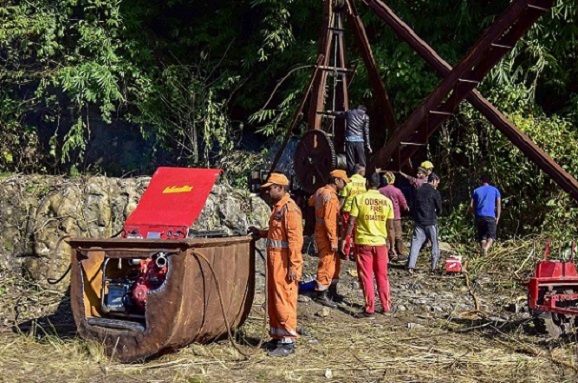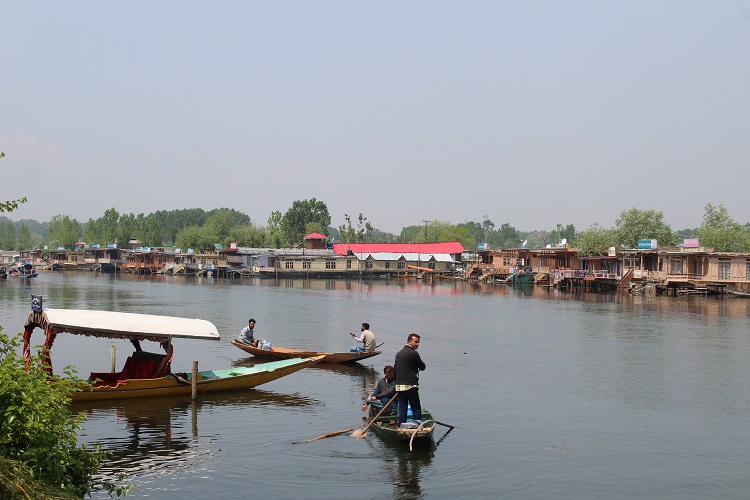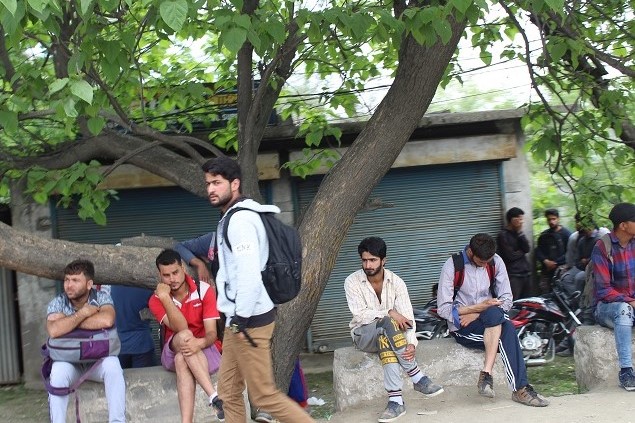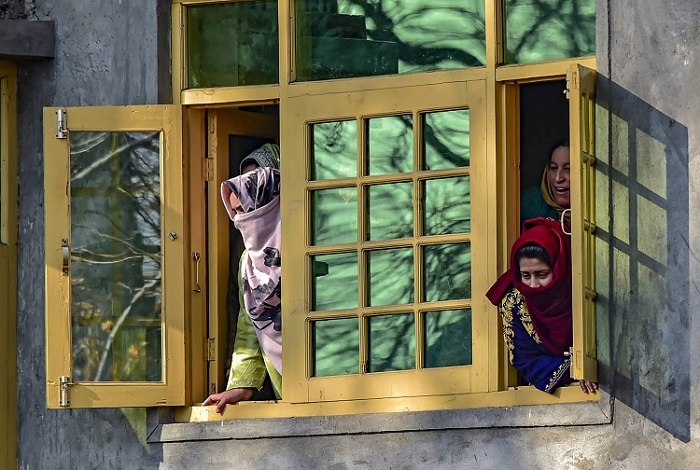Dr. Alexander Douglas specialises in the history of philosophy and the philosophy of economics. He is a faculty member at the University of St. Andrews in the School of Philosophical, Anthropological and Film Studies. In this series, we will discuss the philosophy of economics.
Scott Douglas Jacobsen: How is philosophising about economics useful in the development of insights into economics itself?
Dr. Alexander Douglas: Many economists doubt that it is. They can argue that they get along just fine without reading any philosophy of economics. And I suppose they do, given their goals. Companies and governments keep on hiring them to give advice and make forecasts. Philosophers can criticise their models for being not scientific enough, or ignore what is of real human value. Anyone can criticise their forecasting record based on whatever external standard they deem appropriate. But the economists can always reply: ‘If we’re so wrong, why are we always consulted?’ I think philosophers of economics ought to think about that question. But doing so would mean moving in the direction of social critique and away from contributing to economics as such.
Joan Robinson claims, in Freedom and Necessity, that the task of the social sciences is very different to that of the natural sciences. It is, she says, to provide society with an organ of self-consciousness. I think contemporary economics fails at this task. Economists build models in which the system works a certain way; they plug in values and predict outcomes, and policymakers and others base their decisions on these predictions. What is left out is the amount of social control required to keep the systems working in this theoretically tractable way. Economists rarely discuss this, as far as I know. Nor do they acknowledge the extent to which their models are self-fulfilling prophecies: the systems they describe work the way that they do because decision-makers unconsciously internalise the models that describe them working in that way. A real organ of social self-consciousness would make us aware of all this. If economists don’t provide one, maybe philosophers will have to.“Contemporary economics fails at this task.. of providing society with an organ of self-consciousness.”
Jacobsen: How will the economics of the future change – as the implicit philosophy and descriptions around it change into the future?
Douglas: I’m not sure what the engine of change would be. While economics is heavily criticised in certain portions of the media, economists are still, as I said, routinely hired to produce the analyses which government agencies and businesses use to determine their strategies. The analyses are based on models, the basic types of which were developed in the 1970s. Economists criticise some of the types and promote others. But, from the outside, I don’t see a huge amount of theoretical innovation; within the economic profession, improvement is just about making the right upgrades to the classic machines.
To me, this theoretical conservatism goes with political conservatism. We theorise how we govern, and vice-versa. Economic modelling is all about predicting and controlling human actions with increasing precision – winning that little bit more margin by tracking us with better algorithms. Politics works to render us algorithmically tractable. The goals work in a positive feedback loop. The more our political institutions can trap our behaviour into predictable patterns, the better the economic models can track us; the better the models track us, the better the institutions can control us. If we refuse to be described in this way, we can refuse to be governed in this way, but we can’t successfully refuse the one and not the other.
Jacobsen: Do you think the era of individual economic philosophy is almost dead, where a pluralistic approach becomes ideal because of the complexity of an international economy such as our own?
Douglas: Pluralism sounds nice. But the problem is that different approaches are non-diversa sed opposita. They are at odds with each other more than they complement each other.
Take the most fundamental question: how the entire economy, in the most general sense, works. One answer appeals to the idea of a ‘dynamic’ general equilibrium. Households maximise their utility over an entire lifetime, looking over the menu of goods that exist now and will be produced in the future. Firms decide which goods to produce by optimising a profit function, which is partly determined by the household utility functions. The government tries to minimise losses from inflation and unemployment, and this policy can, as Michael Woodford demonstrated, be derived from household utility functions. Samuel Bowles called this picture ‘utopian capitalism’. I think most economists see the real economy as an approximation, though perhaps a distant one, to this utopian picture (some might call it dystopian).
Here is an entirely different picture, which I tried to sketch in my book. Institutions determine the prices, production, and allocation of goods, in a way that is almost entirely independent of household utility. Companies get big enough to hold spare capacity and run operations too complicated for their shareholders to understand. They don’t need to worry about profit maximisation. Smaller firms, rather than competing with the market leaders, simply copy their apparently successful strategies. The government, meanwhile, chooses its policy targets by thinking about what will win votes, not what will maximise household utility. And production decisions are primarily determined by central bank policy.
Here is a concrete example of the latter. If you’re a bank in the UK, and you issue a mortgage, you can swap the mortgage with the Bank of England for pure cash (or a reserve balance): mortgages are on the Eligible Collateral List. Their placement there was a political choice. If, on the other hand, you issue a loan to an entrepreneur, you can’t swap the loan for cash (unless you find someone to buy it), and you’re stuck with the loss in case of default. Unsurprisingly, the financial sector is much more interested in lending to house-buyers and aspiring ‘property asset managers’ than to entrepreneurs in other sectors. And so we get a British economy obsessed with trading in property and doing very little else. Households readily internalise this obsession, but I doubt that it came from them originally. I think this is a pretty clear case of the economy being directed from the top, by political decisions that have nothing to do with maximising household utility.
The first picture is of a traditional free-market economy; the second is of a command economy. I suspect we live in a command economy. For all the rhetoric about free enterprise, the defeat of the Soviet Union by the Western powers was the victory of one sort of command economy over another – one controlled through the monetary system rather than through the industrial system. But whether or not you agree with me depends on which approach to economics you take. I don’t think we can avoid this argument by taking some ecumenical approach.
Jacobsen: Does modern economics imply a certain amount of faith in particular axioms? If so, what is the faith? What axioms?
Douglas: Yes, at the broadest level most economic theory (including Marxist theory, I should say), implies faith in the existence of a market system, in which capitalists pursue profit by producing at the lowest possible cost the goods that people want. I’ve never seen much evidence that our system works like that. Certainly its behaviour resembles that model to some degree of approximation, but then it resembles anything to some degree of approximation.
Above I tried to sketch out another model – not a mathematical model, but a verbal one – that I think our system resembles a greater degree of approximation. The production and allocation of goods are decided by the executive decisions of committees whose members got there by a combination of inherited privilege and blind chance.
Economists can reply that a verbal ‘model’ of this sort is unscientific: it is a satirical caricature with no mathematical precision. But then caricatures and models are the same in one way: they flatten reality by emphasising certain features and ignoring many others. Mathematical models can deliver precise predictions, but caricatures can predict outcomes in a different way – more generic, but perhaps more nuanced in a deeper sense. Which is preferable depends on what our ultimate purposes are: what we want our economic theory for. I return to Robinson: if we are after an organ of social self-consciousness, caricature might be preferable to mathematics. But if we want to sustain the status quo at the lowest possible cost, economists are probably getting it about right.
Scott Jacobsen: Let’s move into your new research, as those who have followed the previous sessions know, you have an expertise in the philosophy of economics. Dr. Stephen Law recommended you. How else can social sciences differentiate from and inform society in contrast to the natural sciences?
Dr. Alexander Douglas: I class psychology as a natural science rather than a social science. I think psychological research can serve many important social functions – for example educating us out of moral prejudices, but this is not what you’re asking about.
Social sciences can be what Joan Robinson called “an organ of self-consciousness” because they can expose the origins of our social institutions. This can lead us to see them in a different light. And then, sometimes, they exercise less control over us.
For example, René Girard, whom I admire very much, went as far as he possibly could in identifying scapegoating as the hidden mechanism that underlies many of our institutions and social practices. He found that art, theatre, worship, criminal trials, marriage – there are many more examples – have their origin in scapegoating rituals. This is in stark contrast to the more rationalistic functional explanations given by other social scientists.
While I have no expertise to pronounce on whether or not he was right, I admire his work because it inspires us to take a second look at our institutions, to see that they really are what we think they are. It was crucial for Girard that once we recognise a practice as a scapegoating practice, we can no longer commit to it. Scapegoating only works when those participating in it think they’re doing something else, i.e., prosecuting a deserving criminal.
This is, perhaps, an example of what Joan Robinson was talking about. When we become self-conscious in our institutions, they stop working on us. In political economy, when we start to see that what we have been institutionalised to think of as a market composed of individual exchanges might be in fact something quite different, we begin to wriggle loose from an ideology that controls much of our social life. Likewise with many other social practices and institutionalised forms of life.
In future work, I plan to look at early modern theories of society, particularly those of Spinoza, Hobbes, and some of their contemporaries.
Spinoza was the most philosophically radical thinker of the Early Modern period, at least in Western Europe. He challenged the theological prejudices of his day while retaining the grand and sweeping cast of mind of a religious thinker.
Jacobsen: You have a deep interest and have published research on Spinoza. Who was Spinoza? Does his work inform your own on the philosophy of economics?
Douglas: Spinoza was the most philosophically radical thinker of the Early Modern period, at least in Western Europe. He challenged the theological prejudices of his day while retaining the grand and sweeping cast of mind of a religious thinker. He believed in the power of pure reason with a conviction seldom found elsewhere in Europe, outside of the period of ‘Idealist’ philosophy.
His work informs my views on everything, including on the philosophy of economics. One thing I’ve been interested in lately is the treatment of time inconsistency in economic models. A time-inconsistent policy is, roughly, one that determines what it is best to do nowversus what it is best to do in the future. The inconsistency arises from what was previously ‘the future’ eventually becoming ‘now’, in which case the same policy delivers a different result inconsistent with the first. Spinoza was one of the first philosophers, to my knowledge, to consider time-inconsistency. The last few propositions of Part Four of his masterpiece, Ethics Demonstrated in Geometrical Order, discuss how a crucial component of rationality is the avoidance of time-inconsistency.
Spinoza also deals with the social aspects of human desire, in a way that I find more insightful than the standard liberal tradition. Spinoza notices how insecure we often are in our desires: we’re really very unsure about what we want. One effect of this is that we both model our desires on those we seem to observe in others and aim at being emulated in our desires. Having others around us wanting certain things confirms our belief that we really want those things. This plays havoc with the transactions that economists treat as basic and standard. Exchange, for example, is profoundly complicated by the tendency of desires to converge on certain goods rather than being spread stably across diverse goods.
This is, I believe, part of the explanation of why one of Spinoza’s chief influences, Hobbes did not believe that any stable allocation of goods could temper the tendency to rivalrous violence in the ‘state of nature’. This insight puzzled his contemporaries, but Spinoza’s psychological account fills in some crucial details. Here I take inspiration from the work of Paul Dumouchel and Jean-Pierre Dupuy, who have looked from this angle at Hobbes, Adam Smith, and other supposed founding figures in the liberal tradition.
Jacobsen: Spinoza had an interest in Ibn Khaldoun, who was the father of trickle-down economics. Why did Spinoza have this interest? What is behind the philosophy of trickle-down economics in past and the present?
Douglas: I don’t know of any evidence that Spinoza read Ibn Khaldoun. I’m not sure Khaldoun was very well known in Western Europe until after Spinoza’s time. But Spinoza was more connected, via the Hebrew tradition, to the medieval Arabic literature than many of his contemporaries.
I don’t really know much about the history of trickle-down economics. Arthur Laffer wrote an article on his famous ‘curve’, showing some historical precedents for the central idea. The Laffer Curve is, roughly, the idea that increasing tax rates up to some point increases overall revenue to the Exchequer, but increasing it past that point decreases overall revenue due to a detrimental effect on national income. It’s often cited as a prime example of an economic idea with very little practical importance, due to the strength of its assumptions and its abstraction from complicating issues.
Spinoza has very little to say about taxation as such. In the Political Treatise (ch.6, §12) he argues that during peacetime there should be no taxation, though all land and housing should be publicly owned and then leased from the government. In this sense, he can be interpreted as an early proponent of the Land Value Tax famously promoted by Henry George in the nineteenth century. But trickle-down economics doesn’t seem to me to appear anywhere in his writings.
The Laffer Curve is, roughly, the idea that increasing tax rates up to some point increases overall revenue to the Exchequer, but increasing it past that point decreases overall revenue due to a detrimental effect on national income.
Jacobsen: Were there any social and cultural values – including freedom of speech – that Spinoza supported in order for the economic flourishing of society?
Douglas: It’s almost the other way around for Spinoza. He argues that commercial relations foster peaceful cooperation among people so that they can bind together under a common law and sovereign power. For him, the best guarantee of free speech is a powerful sovereign authority, subject to the democratic control of the citizens, which acts to protect freedom of speech from the soft power of religious and private institutions. So long as the citizens know what is good for them, they will insist upon the sovereign power acting in this way.
Commercial relations support the stability of the state, and thus the authority of the sovereign power, which is the protector of freedom of speech and other rights of citizens. Commerce is important because it keeps the citizens interested in each other’s welfare; “everyone defends the cause of another just so far as he believes that in this way he makes his own situation more stable” (Political Treatise, ch.7, §8). And there’s a positive feedback loop since, as Spinoza argues in the Theologico-Political Treatise, support for free speech and other civic rights ends up strengthening the sovereign authority and the rule of law.
On the other hand, Spinoza is well aware that economic institutions can often work to divide people rather than bringing them together. In the Political Treatise he has a few suggestions for ensuring that the institutions work in the right way; also in the Theologico-Political Treatise he speaks favourably of the Biblical debt jubilee. But, as I’ve argued in a recent paper (“Spinoza, money, and desire”), there is always a risk, on Spinoza’s theory, that our economic institutions will foster socially destructive passions rather than working in more pro-social ways.
Original publication in Conatus News.
Photo by shayd johnson on Unsplash










